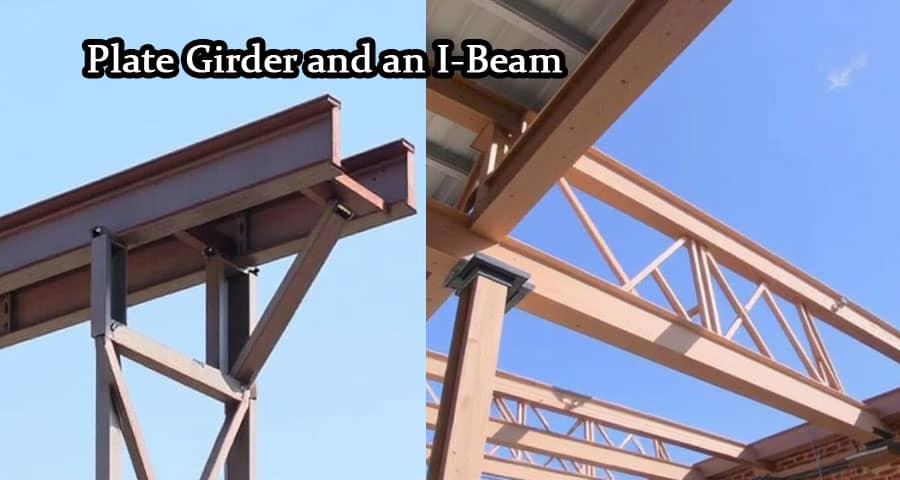Can You Explain the Difference Between a Plate Girder and an I-Beam?

In the realm of structural engineering and construction, two essential components - plate girders and I-beams - play a pivotal role in supporting heavy loads and ensuring the stability of buildings, bridges, and other large structures. Though similar in purpose, these two elements are markedly different in design, fabrication, and application. Understanding these differences is crucial when selecting the appropriate component for a specific engineering task.
Understanding the Basics: What Are Plate Girders and I-Beams?
What is a Plate Girder?
A plate girder is a custom-fabricated steel beam designed for large-span structural applications. It is created by welding or bolting steel plates together, typically forming a deep I-shaped cross-section. The three main components are:
- Top flange
- Bottom flange
- Web
These components are not rolled as a single piece but rather assembled to meet specific load requirements. Plate girders are commonly used when standard rolled sections are insufficient due to their load limitations.
What is an I-Beam?
An I-beam, also referred to as a universal beam (UB) or rolled steel joist (RSJ), is a hot-rolled steel section with a cross-section that resembles the capital letter 'I'. It comprises:
- A horizontal top flange
- A horizontal bottom flange
- A vertical web
I-beams are mass-produced in steel mills and are available in standard dimensions, making them cost-effective for general construction purposes.
Key Differences Between Plate Girders and I-Beams
1. Fabrication Method
- Plate Girders are fabricated by welding or bolting steel plates. This custom approach allows for flexibility in design, accommodating specific engineering requirements.
- I-Beams are rolled directly from steel billets in predefined sizes, limiting their customizability.
2. Load Capacity and Structural Performance
- Plate girders can be designed with very deep webs and wide flanges, enabling them to support extremely heavy loads and span long distances.
- I-beams are suitable for medium to light loads and are often used in residential and commercial buildings where extreme load-bearing is not required.
3. Flexibility in Design
- The ability to tailor the dimensions of a plate girder provides engineers with a greater degree of freedom, especially in bridge construction or high-load industrial applications.
- I-beams come in standardized dimensions which, while convenient, offer limited flexibility in design customization.
4. Material Usage and Cost
- Plate girders generally require more steel and labor, making them more expensive than I-beams. However, they are cost-efficient for large-scale projects where standard beams are inadequate.
- I-beams are economical for common construction needs, especially when the design constraints align with available beam sizes.
5. Application Scope
- Plate Girders are primarily used in:
- Long-span bridges
- Industrial buildings
- Railway structures
- Highway overpasses
- I-Beams are commonly found in:
- Residential homes
- Office buildings
- Parking garages
- Small-scale commercial structures
Advantages of Using Plate Girders
Custom Engineering Solutions
Plate girders offer customizable design features that enable them to be adapted for complex structural requirements, including varying load distributions, unique span lengths, and constraints posed by site geometry.
High Load Capacity
The ability to increase the depth of the web and the width of flanges gives plate girders superior strength, allowing them to handle massive loads over great distances without intermediate supports.
Efficient Use of Materials
Despite requiring more material, plate girders can be optimized in their design, such as incorporating web stiffeners or varying thicknesses, which improves structural efficiency and reduces overall weight.
Advantages of Using I-Beams
Cost-Effectiveness
Due to their mass production and availability, I-beams are economical and easy to source, making them ideal for standardized construction projects.
Ease of Installation
Their uniformity and lighter weight compared to custom-fabricated girders simplify transportation, handling, and installation, reducing labor time and cost.
Versatility in Construction
I-beams are compatible with a wide variety of standard connections, joists, and supports, facilitating their use in multi-story buildings and modular construction.
Comparative Table: Plate Girder vs I-Beam
| Feature | Plate Girder | I-Beam | |
| Fabrication | Welded/bolted steel plates | Rolled from steel billet | |
| Customizability | High | Low | |
| Load Capacity | Very High | Moderate | |
| Span Length | Long spans (>30 meters) | Short to medium spans (<30 meters) | |
| Material Usage | Higher | Lower | |
| Cost | More expensive | Economical | |
| Applications | Bridges, heavy industry, railways | Buildings, garages, small structures |
Engineering Considerations for Selection
When choosing between a plate girder and an I-beam, engineers must evaluate several critical factors:
- Load requirements
- Span lengths
- Construction budget
- Time constraints
- Site limitations
- Future scalability
Finite element analysis (FEA) and other advanced modeling tools are often used to simulate and determine the best structural member for a project, taking into account load distribution, bending moments, shear forces, and deflection behavior.
Conclusion: Making the Right Structural Choice
While both plate girders and I-beams serve as integral components in structural engineering, their selection depends heavily on the specific demands of the project. Plate girders offer unmatched strength and flexibility, making them ideal for large-scale infrastructure, whereas I-beams provide efficient, cost-effective solutions for conventional buildings.
Understanding these distinctions ensures optimal material usage, enhanced structural integrity, and project cost-efficiency.
Please watch the following short video for Plate Girder and an I-Beam
